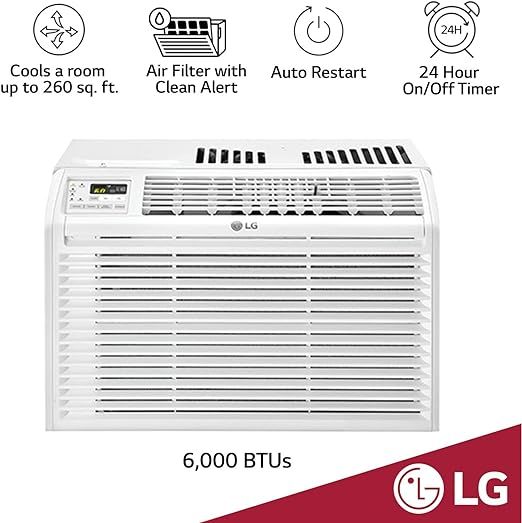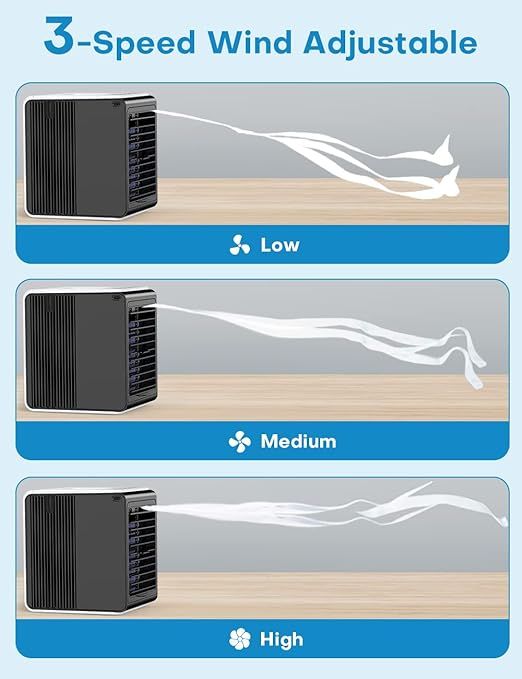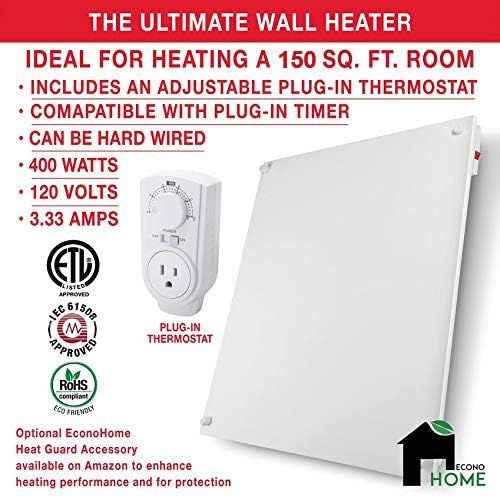Heat Pump vs. Gas Furnace: Cost, Comfort, and Climate
- How Each System Works
- Heat Pump Basics
- Gas Furnace Basics
- Side-by-Side Comparison
- Pros and Cons of Heat Pumps
- Pros and Cons of Gas Furnaces
- Climate Considerations
- Energy Cost Comparison
- Comfort and Performance
- Environmental Impact
- Top 10 Heat Pump & Furnace Models Compared
- Model Reviews and User Insights
- 1. Goodman GSZC18 Heat Pump
- 2. Trane XV20i Heat Pump
- 3. Carrier Infinity 20 Heat Pump
- 4. Mitsubishi Hyper-Heat Pump
- 5. Rheem RP17 Heat Pump
- 6. Lennox SLP99V Gas Furnace
- 7. Trane S9V2 Gas Furnace
- 8. Goodman GMEC96 Gas Furnace
- 9. Rheem Prestige R96V Gas Furnace
- 10. Carrier Comfort 95 Gas Furnace
- Efficiency and Environmental Comparison Table
- Maintenance and Lifespan
- Which Is Cheaper to Run?
- Ideal Setup: Dual-Fuel Systems
- Quick Selection Guide
- FAQs
- Conclusion
Heating is one of the largest energy expenses in any home, and choosing the right system can save you hundreds of dollars each year while improving comfort. Two of the most common options are heat pumps and gas furnaces. Both deliver reliable warmth, but they work differently, have different costs, and perform best in different climates.
If you're building a new home, replacing an old system, or trying to improve efficiency, understanding how heat pumps and furnaces compare will help you make an informed choice. This guide explores everything you need to know: how they operate, their pros and cons, energy costs, and comfort performance across different regions. You'll also find a detailed comparison of 10 top-rated systems on the market with pricing and user feedback.
How Each System Works
Heat Pump Basics
A heat pump uses electricity to move heat rather than generate it. It extracts heat from outside air (or the ground, in geothermal models) and transfers it indoors during winter. In summer, the cycle reverses, allowing it to function as an air conditioner.
Key features:
-
Works year-round for both heating and cooling.
-
Highly efficient because it moves heat instead of producing it.
-
Best suited for mild to moderate climates.
Gas Furnace Basics
A gas furnace burns natural gas or propane to create heat. Air passes through a heat exchanger and is distributed throughout the home via ducts.
Key features:
-
Provides strong, immediate heat.
-
Performs well in very cold climates.
-
Depends on a steady gas supply and venting system.
Side-by-Side Comparison
| Feature | Heat Pump | Gas Furnace |
|---|---|---|
| Energy Source | Electricity | Natural Gas/Propane |
| Heating Method | Transfers heat | Generates heat |
| Efficiency | 200-400% (COP 2-4) | 80-98% AFUE |
| Cooling Function | Yes | No |
| Ideal Climate | Mild to moderate | Cold |
| Installation Cost | $4,000-$8,000 | $3,000-$7,000 |
| Lifespan | 15-20 years | 15-25 years |
| Maintenance | Twice yearly | Annual check |
| Environmental Impact | Low (no combustion) | Moderate (CO₂ emissions) |
| Operation Noise | Quiet | Slightly louder blower sound |
Pros and Cons of Heat Pumps
Pros
-
Dual function: heating and cooling in one system.
-
Highly energy-efficient.
-
Safe (no combustion or exhaust).
-
Lower carbon footprint.
Cons
-
Loses efficiency in freezing climates.
-
Higher upfront cost.
-
May require auxiliary electric heat backup.
Pros and Cons of Gas Furnaces
Pros
-
Strong, fast heating performance.
-
Ideal for extremely cold regions.
-
Generally lower upfront cost.
-
Compatible with existing duct systems.
Cons
-
Produces carbon emissions.
-
Requires venting and gas lines.
-
No cooling capability.
-
Possible dry air indoors.
Climate Considerations
The right choice depends heavily on your region:
-
Mild Climates (South, Pacific, coastal regions): Heat pumps excel, reducing electricity costs dramatically.
-
Cold Climates (Midwest, Northeast): Gas furnaces perform better and stay efficient even below freezing.
-
Mixed Climates: Dual-fuel systems that combine a heat pump with a gas furnace offer the best of both worlds.
Energy Cost Comparison
| System Type | Average Efficiency | Estimated Annual Operating Cost* |
|---|---|---|
| Heat Pump (Electric) | 300% | $500-$900 |
| High-Efficiency Gas Furnace | 95% AFUE | $600-$1,200 |
| Standard Gas Furnace | 80% AFUE | $800-$1,500 |
*Based on national average energy rates and 1,800 sq. ft. home.
Comfort and Performance
| Factor | Heat Pump | Gas Furnace |
|---|---|---|
| Heating Speed | Gradual, steady warmth | Fast, intense heat |
| Temperature Consistency | More even, lower fluctuation | Quick spikes, can feel drier |
| Air Quality | Maintains humidity | Can dry the air |
| Noise | Very quiet | Audible fan noise |
| Versatility | Heats & cools | Heat only |
Environmental Impact
A major difference lies in sustainability. Heat pumps rely on electricity, which can come from renewable sources, making them cleaner and greener. Gas furnaces, on the other hand, burn fossil fuels directly, emitting carbon dioxide.
If reducing your carbon footprint is a priority, a heat pump wins hands down.
Top 10 Heat Pump & Furnace Models Compared
| Model | Type | Price (Amazon or Dealer) | Efficiency | Key Feature | Pros | Cons | Avg. Rating |
|---|---|---|---|---|---|---|---|
| Goodman GSZC18 | Heat Pump | $5,299 | 18 SEER / 9.5 HSPF | Variable-speed compressor | Quiet, durable | Pricey install | 4.7/5 |
| Trane XV20i | Heat Pump | $6,800 | 20 SEER / 10 HSPF | Smart thermostat control | Top efficiency | Expensive | 4.8/5 |
| Carrier Infinity 20 | Heat Pump | $6,500 | 20 SEER / 10 HSPF | Two-stage operation | Great humidity control | Costly maintenance | 4.7/5 |
| Mitsubishi Hyper-Heat | Heat Pump | $4,900 | 18 SEER | Cold-climate capable | Works down to −13°F | Needs pro install | 4.8/5 |
| Rheem RP17 | Heat Pump | $4,300 | 17 SEER / 9 HSPF | Energy-saving inverter tech | Reliable | Moderate noise | 4.6/5 |
| Lennox SLP99V | Gas Furnace | $5,100 | 99% AFUE | Variable-speed, quiet | Ultra efficient | High price | 4.8/5 |
| Trane S9V2 | Gas Furnace | $4,200 | 96% AFUE | Two-stage burner | Smooth performance | None noted | 4.7/5 |
| Goodman GMEC96 | Gas Furnace | $3,299 | 96% AFUE | Budget-friendly high-efficiency | Affordable | Slightly noisy | 4.6/5 |
| Rheem Prestige R96V | Gas Furnace | $4,000 | 96% AFUE | Variable airflow | Energy Star certified | Needs pro setup | 4.6/5 |
| Carrier Comfort 95 | Gas Furnace | $3,850 | 95% AFUE | Compact design | Reliable | No variable fan | 4.5/5 |
Model Reviews and User Insights
1. Goodman GSZC18 Heat Pump
A premium, variable-speed unit known for quiet performance and reliability.
Pros: Excellent balance of efficiency and cost.
Cons: Installation cost can vary by contractor.
Customer Review: "Our energy bills dropped by 25%. Runs almost silently."
2. Trane XV20i Heat Pump
A flagship model with smart communication controls.
Pros: Super quiet, highly efficient, and ideal for year-round comfort.
Cons: Price is high but justified by performance.
Customer Review: "Incredibly consistent temperature. Worth the premium."
3. Carrier Infinity 20 Heat Pump
Smart dual-stage heating with impressive dehumidifying capabilities.
Pros: Excellent comfort in humid climates.
Cons: Maintenance can be pricey.
Customer Review: "Keeps our Florida home cool and warm flawlessly."
4. Mitsubishi Hyper-Heat Pump
Perfect for colder areas with advanced inverter technology.
Pros: Works efficiently even below zero.
Cons: Requires professional installation.
Customer Review: "We live in Minnesota, and it handles winters easily."
5. Rheem RP17 Heat Pump
A reliable choice for efficiency without top-tier pricing.
Pros: Energy-saving inverter compressor.
Cons: Slightly noisier than premium models.
Customer Review: "Affordable and powerful. Heats our home quickly."
6. Lennox SLP99V Gas Furnace
Among the quietest and most efficient furnaces available.
Pros: Nearly 99% AFUE rating, whisper-quiet fan.
Cons: Premium cost.
Customer Review: "We barely notice it running. Amazing comfort."
7. Trane S9V2 Gas Furnace
Two-stage heating for smoother temperature control.
Pros: Efficient and dependable.
Cons: Slightly higher installation cost.
Customer Review: "Keeps our home steady at 72°F without fluctuations."
8. Goodman GMEC96 Gas Furnace
A budget-friendly, high-efficiency model ideal for moderate climates.
Pros: Affordable and reliable.
Cons: Slightly louder blower.
Customer Review: "Solid furnace for the price. Great upgrade from our old unit."
9. Rheem Prestige R96V Gas Furnace
Energy Star certified with variable airflow.
Pros: Great energy savings, steady heat output.
Cons: Requires expert setup.
Customer Review: "Quiet and efficient-big difference in comfort."
10. Carrier Comfort 95 Gas Furnace
Compact furnace for smaller homes or apartments.
Pros: Reliable, cost-effective.
Cons: Lacks smart controls.
Customer Review: "Simple, efficient, and perfect for our townhouse."
Efficiency and Environmental Comparison Table
| Category | Heat Pump | Gas Furnace |
|---|---|---|
| Energy Efficiency | 250-400% | 80-99% |
| Carbon Emissions | None (direct) | Moderate to high |
| Annual Energy Use | Lower in mild climates | Lower in extreme cold |
| Utility Type | Electricity | Natural gas or propane |
| Rebates & Incentives | Often eligible for rebates | Varies by state |
Maintenance and Lifespan
Heat pumps generally require biannual servicing to clean coils, check refrigerant, and ensure airflow. Gas furnaces require annual tune-ups to clean burners, inspect the flue, and test gas pressure.
-
Heat Pump lifespan: 15-20 years
-
Gas Furnace lifespan: 15-25 years
Regular maintenance ensures peak efficiency and safety for both systems.
Which Is Cheaper to Run?
While gas is often cheaper per unit of energy, heat pumps use far less energy overall, especially in mild regions. In cold northern states, furnaces may cost less to operate because heat pumps need backup electric resistance heat below 25°F.
Ideal Setup: Dual-Fuel Systems
For regions with varying temperatures, dual-fuel systems are a hybrid solution. The heat pump handles moderate temperatures efficiently, and the gas furnace automatically takes over in extreme cold. This setup maximizes comfort and minimizes operating costs year-round.
Quick Selection Guide
| Home Type | Best Choice | Reason |
|---|---|---|
| Apartment/Small Home | Heat Pump | Energy efficiency, compact size |
| Large Home, Cold Climate | Gas Furnace | Strong heat output |
| Mixed Climate | Dual-Fuel System | Balanced performance |
| Eco-Conscious Home | Heat Pump | Lower carbon footprint |
FAQs
Q: Do heat pumps work in freezing weather?
A: Modern models like Mitsubishi Hyper-Heat can operate efficiently down to −13°F, though output drops as temperatures fall.
Q: Can a heat pump replace both my AC and furnace?
A: Yes, it can both heat and cool your home, making it an all-in-one system.
Q: Is a gas furnace safer?
A: Both are safe if maintained, but heat pumps eliminate risks of gas leaks and carbon monoxide.
Q: Which system lasts longer?
A: Gas furnaces may last a few years longer, but heat pumps provide dual functionality.
Conclusion
Choosing between a heat pump and a gas furnace comes down to your climate, budget, and energy priorities.
-
If you live in a mild or moderate climate, a heat pump offers year-round comfort and major energy savings.
-
If you're in a cold northern region, a gas furnace provides powerful, dependable heat.
-
For variable climates, a dual-fuel system combines both technologies for the ultimate flexibility.
No matter what you choose, investing in a modern, efficient system reduces energy bills, increases comfort, and adds long-term value to your home.







